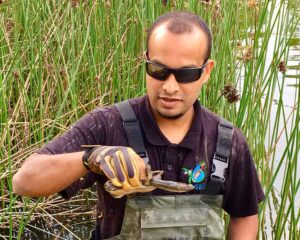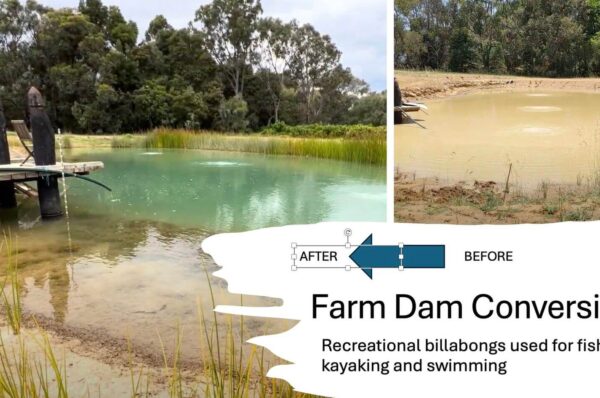PASES Aqua is committed to restoring the ecological balance in water bodies impacted by invasive species. Feral fish pose severe threats to ecosystems, and our advanced techniques, such as electrofishing, help control these populations while ensuring minimal environmental harm. In this blog, we’ll delve into how electrofishing works, its benefits, and why it’s an effective method for fish control.
What is Electrofishing?
Electrofishing is a specialised method to capture or remove unwanted fish species from aquatic environments. The technique involves generating an electric field in the water, which temporarily stuns the fish, making them easier to capture. Contrary to common misconceptions, electrofishing does not kill the fish. Instead, it safely immobilises them briefly, allowing our team to capture the invasive species while leaving native fish unharmed selectively.
How Does Electrofishing Work?

Electrofishing creates an electric field between two electrodes—the anode and the cathode—submerged in the water. Here’s a breakdown of the process:
- Electrode Placement: Our electrofishing boats are equipped with advanced systems, like the Smith Root Apex boat electrofisher. An anode (positive electrode) is positioned at the front of the boat, while a cathode (negative electrode) is placed further back.
- Electric Field Generation: When the system is activated, an electrical current passes through the water, creating a field between the electrodes. The current momentarily stuns any fish within range, particularly those swimming toward the anode.
- Fish Capture: Stunned fish float toward the surface and can be easily captured using nets. Once removed from the electric field, the fish recover quickly and can swim freely if not captured.
- Processing: Feral fish are removed, while native species may be released back into the water or relocated to safer environments.
Is Electrofishing Safe?
Yes! Electrofishing is entirely safe for fish and other aquatic wildlife when done correctly. The electrical current is carefully regulated to stun the fish temporarily without causing permanent harm.
Our method has been proven safe even for non-target wildlife like turtles, frogs, and birds. These creatures typically remain unaffected, and no recorded fatalities from electrofishing operations have occurred.
Why Electrofishing?
Electrofishing is often the preferred method for fish removal because it is:
- Efficient: Electrofishing allows us to capture large numbers of feral fish relatively quickly. In smaller lakes, we often remove over 90% of invasive fish populations in just 2 to 3 days.
- Selective: By temporarily stunning the fish, we can selectively capture invasive species like Feral Carp (Cyprinus carpio) while releasing native species unharmed.
- Non-lethal: Electrofishing does not harm the fish. Once stunned, they recover quickly and return to normal behaviour within minutes if not removed.
When is Electrofishing Used?
Electrofishing is an ideal solution for feral fish control in various scenarios, such as:
- Reservoir maintenance or decommissioning
- Bridge and culvert repairs
- Dredging projects
- De-watering operations
- Lock repairs
Our team has successfully used electrofishing to eradicate unwanted fish from lakes, reservoirs, and wetlands, often removing hundreds of invasive fish in a single operation.
Other Methods for Feral Fish Control
In addition to electrofishing, PASES Aqua employs various other methods to ensure effective feral fish management:
- Custom-made Seine Netting: Tailored to the specific needs of the water body for large-scale fish capture.
- Spearfishing: A more targeted approach to capture invasive species.
- Biological Control: We have introduced trout for example to control Gambusia in shallow lakes over winter (through direct predation), but die off over summer.
- Native Fish Restocking: Rebuilding the Ecosystem
After removing feral fish, we focus on reintroducing native fish species to restore the ecosystem. Native species like the Western Pygmy Perch (Nannoperca vittata) and the Western Minnow (Galaxias occidentalis) are crucial in maintaining a balanced, thriving aquatic environment.
Electrofishing is an essential tool in the fight against invasive fish species, offering a safe, efficient, and environmentally friendly solution to restore aquatic ecosystems. At PASES Aqua, we combine electrofishing with other cutting-edge methods to provide comprehensive feral fish control services, ensuring our water bodies remain healthy and balanced.
For more information on how PASES Aqua can help control feral fish in your water body, contact us today to explore the best fish rescue and removal options for your needs.





